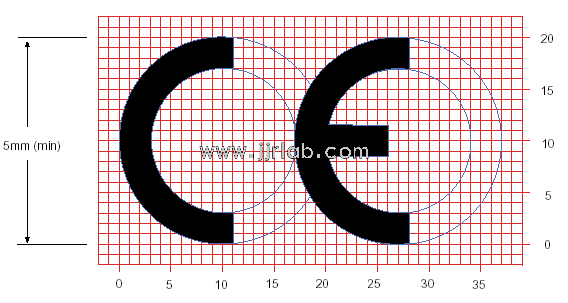
CE Certification Process for Lighting Products Exported to the EU
With the continuous advancement of technology, LED lighting products have gained a significant position in the lighting market. The European market, as a major global econoMIC entity, has become an important sales target for lighting manufacturers worldwide. However, the EU imposes stringent standards and processes for CE certification of LED lighting products.
This article provides a detailed overview of the standards and processes for exporting LED lighting products to the EU with CE certification. It aims to help enterprises understand and comply with relevant regULations to ensure their products meet EU market standards and enter the market successfully.

Overview of CE Certification
CE certification is a safety certification system implemented by the EU for products imported and sold within its territory. The ce marking indicates that a product complies with EU regulations and standards, serving as a reference for consumer choice. For lighting products, CE certification primarily focuses on safety, electromagnetic compatibility (EMC), and energy efficiency.
Importance of CE Certification
CE certification is a mandatory standard, often referRED to as a "lifeline certification," recognized by all EU member states as a product quality assurance system. Lighting manufacturers seeking to sell their products in the EU must obtain CE certification first. Beyond being a mark, CE certification guarantees quality, safety, and service, enhancing the competitiveness of certified products in the global market and fostering consumer trust.
Classification of LED Lighting Products
LED lighting can be broadly divided into indoor and outdoor categories:
- **Indoor lighting**: LED bulbs, spotlights, downlights, track lights, panel lights, industrial lights, kitchen and bathroom lights, desk lamps, etc.
- **Outdoor lighting**: LED street lights, buried lights, floodlights, lawn lights, tunnel lights, and more.
Standards for Various Types of LED Lights
1. **LED Bulbs**
- **EMC Standards**: EN 55015, EN 61547, en 61000-3-2, EN 61000-3-3
- **LVD Standards**: IEC/EN 60968, IEC/EN 62560, IEC/EN 61347-1, IEC/EN 61347-2-13, IEC/EN 62031, IEC/EN 62471, IEC/EN 62493
2. **LED Fixtures (e.g., downlights, spotlights, streetlights)**
- **EMC Standards**: EN 55015, EN 61547, EN 61000-3-2, EN 61000-3-3
- **LVD Standards**: IEC/EN 60598-1, IEC/EN 60598-2-x (depending on the specific type of fixture), IEC/EN 61347-1, IEC/EN 61347-2-13, IEC/EN 62031, IEC/EN 62471, IEC/EN 62493
3. **LED Tubes**
- **EMC Standards**: EN 55015, EN 61547, EN 61000-3-2, EN 61000-3-3
- **LVD Standards**: IEC/EN 60598-1, IEC/EN 61347-1, IEC/EN 61347-2-13, IEC/EN 61195, IEC/EN 62031, IEC/EN 62471, IEC/EN 62493
Key Standards for CE Certification
1. **Electromagnetic Compatibility (EMC)**
Ensures the product does not cause or suffer from electromagnetic interference. EMC tests are conducted during certification.
2. **Safety Standards (LVD)**
Ensures the product poses no harm or danger to users or the environment. Safety tests are mandatory for compliance.
3. **Environmental Standards**
Ensures minimal environmental impact, validated through eco-friendly testing.
4. **Accessibility Standards**
Ensures the product can be conveniently used by individuals with disabilities.
5. **Labeling Requirements**
Products must bear the CE mark upon certification. Supporting documents proving compliance must accompany the product.
ce certification process for Lighting Products
1. **Application Submission**: Submit a CE certification application to JJR Laboratory.
2. **Document Preparation**: Prepare all required certification documents.
3. **Product Testing**: Send product samples to the lab for testing.
4. **Report Compilation**: Certification engineers compile reports based on test results.
5. **Audit Submission**: Submit the complete report for audit.
6. **Certificate Issuance**: A ce certificate is issued upon successful audit.
**Processing Time**: Typically 5–7 working days under normal circumstances.
Considerations for CE Certification
1. Provide accurate product information and technical specifications.
2. Comply with EU regulations and standards during production to ensure product safety and quality.
3. Follow the product manual for proper installation and use to avoid safety risks.
4. Address non-compliance issues promptly with the certification body.
CE certification is a vital step for ensuring lighting products can be sold in the EU. Manufacturers must understand and adhere to EU regulations and standards to ensure product safety and quality. Familiarity with the certification process and standards helps manufacturers secure CE certification more efficiently. For consumers, choosing CE-certified products ensures better safety and health protection.
Email:hello@jjrlab.com
Write your message here and send it to us
 What Are the Testing Items of California Propositi
What Are the Testing Items of California Propositi
 E-Cigarette EU TPD Testing
E-Cigarette EU TPD Testing
 Testing Certification for E-cigarettes Exported to
Testing Certification for E-cigarettes Exported to
 What is Amazon US CPC Certification?
What is Amazon US CPC Certification?
 UK Toy Safety Regulation Standard EN 71-13
UK Toy Safety Regulation Standard EN 71-13
 What is EU UFI Registration?
What is EU UFI Registration?
 EU UFI Registration for E-cigarette E-liquid
EU UFI Registration for E-cigarette E-liquid
 How to get the MSDS Report for Electronic Cigarett
How to get the MSDS Report for Electronic Cigarett
Leave us a message
24-hour online customer service at any time to respond, so that you worry!




